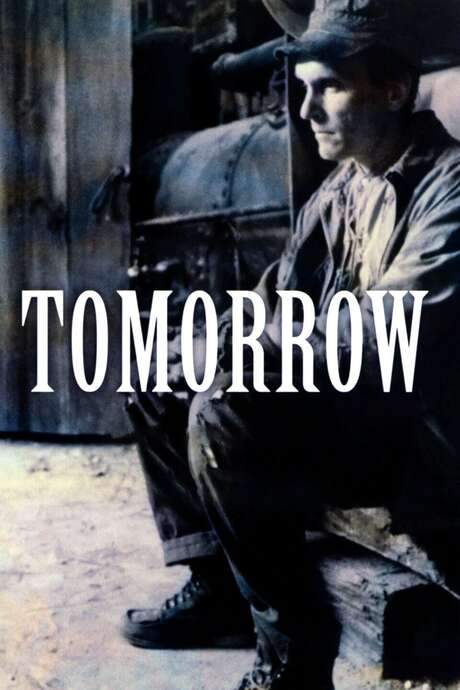Warning: spoilers below!
Haven’t seen There’s Always Tomorrow yet? This summary contains major spoilers. Bookmark the page, watch the movie, and come back for the full breakdown. If you're ready, scroll on and relive the story!
There’s Always Tomorrow (1934) – Full Plot Summary & Ending Explained
Read the complete plot breakdown of There’s Always Tomorrow (1934), including all key story events, major twists, and the ending explained in detail. Discover what really happened—and what it all means.
Joseph White is a man who feels sidelined at home, as his wife Sophie White chooses to stay in with their five grown children rather than mark their wedding anniversary. Sophie’s constant focus on the needs and activities of the family leaves Joseph craving a quiet moment and a bit of companionship, something that seems increasingly scarce in a bustling house. One night, when he can’t find a peaceful corner to read his newspaper, he ends up on the porch, trying to savor a little solitude among the sounds of a busy household.
The evening takes a turn with the arrival of Alice Vail, Joseph’s former secretary. Alice and Joseph once shared a deep, though never consummated, affection, and she has spent years away in Europe. Now back in town, she brings a warmth and a sense of history that Joseph hadn’t realized he’d missed. The two rekindle their connection in a gently affectionate way, and Joseph is delighted simply by her company. Their time together includes a theater outing that leaves Joseph feeling buoyed; he learns that Alice has never married, a detail that adds a bittersweet layer to their renewed bond.
Meanwhile, the family life around Joseph continues to swirl with activity. On one of his weekly lodge nights, he must ride the streetcar in the snow because his children have borrowed his car. The sight of him leaving, and the subsequent quiet that follows, triggers the children’s curiosity and concern. They happen to notice him entering Alice’s house, and they park nearby to observe. The car later refuses to start, and the situation—full of practical inconveniences—gives the children a chance to see a gentler, more vulnerable side of their father.
When the tow truck arrives and the household gathers to wait, Alice invites the family inside. The eldest son, Arthur White, is visibly shocked and barely civil to Alice, even as his fiancée Helen Graham and the other siblings, Janet White, Marjorie White, Dick White, and Fred White, extend hospitality and kindness. Alice, with a combination of charm and shrewdness, tells them a story about her long-ago, platonic relationship with Joseph, carefully avoiding the truth of his exact identity while making it clear that she understands his loneliness and the way his family has used him as a helper rather than a father.
Back at home, a subtle transformation occurs. Except for Arthur, the children respond with greater warmth and consideration toward Joseph, recognizing that his loneliness has been real and that he has quietly borne much of the weight of the household. Yet as the next Thursday night approaches, the family is determined to keep him from leaving, knowing he might seek out Alice again instead of returning to the lodge. The tension between family duty and personal happiness becomes a central thread in the story, and it plays out with a poignant blend of humor and heart.
As the moment to part draws near, Alice returns to say goodbye, having decided to return to Europe. She stages a small moment of dramatic tact, pretending that Helen left her purse at Alice’s house, and then completes her “story” with a revelation: the man she fell in love with was never truly in love with her. Outside, she confides in Joseph that Helen warned her about the feelings of his children and that she believes Joseph does love her, yet the happiness of his family weighs more heavily in her eyes. Joseph pleads with her not to leave, but she understands that the more important goal is the well-being of the family, and she steps away.
In the final beat of the tale, a quiet return to normalcy settles over the household. A little later, Joseph joins his wife Sophie White as she walks to the cinema, where she reaffirms her love for him. The momentum of the evening shifts from individual longing to the reaffirmation of a shared life, underscored by the ties that bind a family together even when its members momentarily falter in their attention. The film closes on a note of domestic resilience, with love and family continuity taking precedence over personal loneliness, and with the sense that, despite the complexities and disappointments, the bonds that hold the White household together are stronger than any single moment of neglect.
Last Updated: October 09, 2025 at 14:04
Unlock the Full Story of There’s Always Tomorrow
Don't stop at just watching — explore There’s Always Tomorrow in full detail. From the complete plot summary and scene-by-scene timeline to character breakdowns, thematic analysis, and a deep dive into the ending — every page helps you truly understand what There’s Always Tomorrow is all about. Plus, discover what's next after the movie.
There’s Always Tomorrow Timeline
Track the full timeline of There’s Always Tomorrow with every major event arranged chronologically. Perfect for decoding non-linear storytelling, flashbacks, or parallel narratives with a clear scene-by-scene breakdown.

Similar Movies to There’s Always Tomorrow
Discover movies like There’s Always Tomorrow that share similar genres, themes, and storytelling elements. Whether you’re drawn to the atmosphere, character arcs, or plot structure, these curated recommendations will help you explore more films you’ll love.
Explore More About Movie There’s Always Tomorrow
There’s Always Tomorrow (1934) Scene-by-Scene Movie Timeline
There’s Always Tomorrow (1934) Movie Characters, Themes & Settings
There’s Always Tomorrow (1934) Spoiler-Free Summary & Key Flow
Movies Like There’s Always Tomorrow – Similar Titles You’ll Enjoy
There’s Always Tomorrow (1956) Full Summary & Key Details
There’s Always Hope (2021) Spoiler-Packed Plot Recap
There’s Always a Woman in Between (2008) Full Movie Breakdown
When Tomorrow Comes (1939) Ending Explained & Film Insights
When Tomorrow Dies (1965) Story Summary & Characters
There's Always Vanilla (1972) Complete Plot Breakdown
Tomorrow’s Family (2020) Story Summary & Characters
A Man and a Woman (1966) Movie Recap & Themes
One More Tomorrow (1946) Detailed Story Recap
Empty Days (1999) Detailed Story Recap
Tomorrow (1972) Story Summary & Characters
Just a Stranger (2019) Movie Recap & Themes
It Happened Tomorrow (1944) Full Movie Breakdown
After Tomorrow (1932) Full Movie Breakdown
Tonight You’re Sleeping with Me (2023) Full Movie Breakdown


















